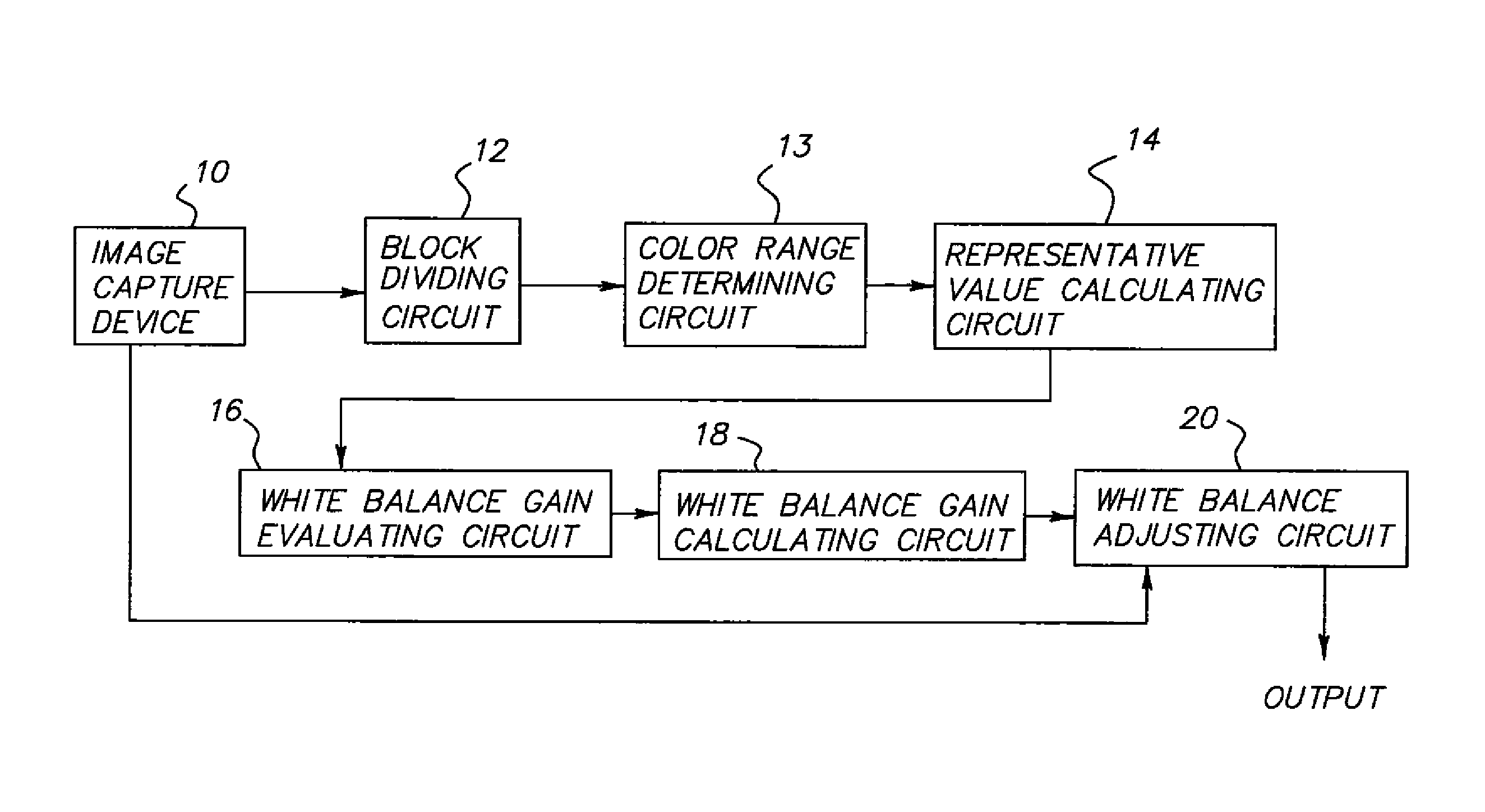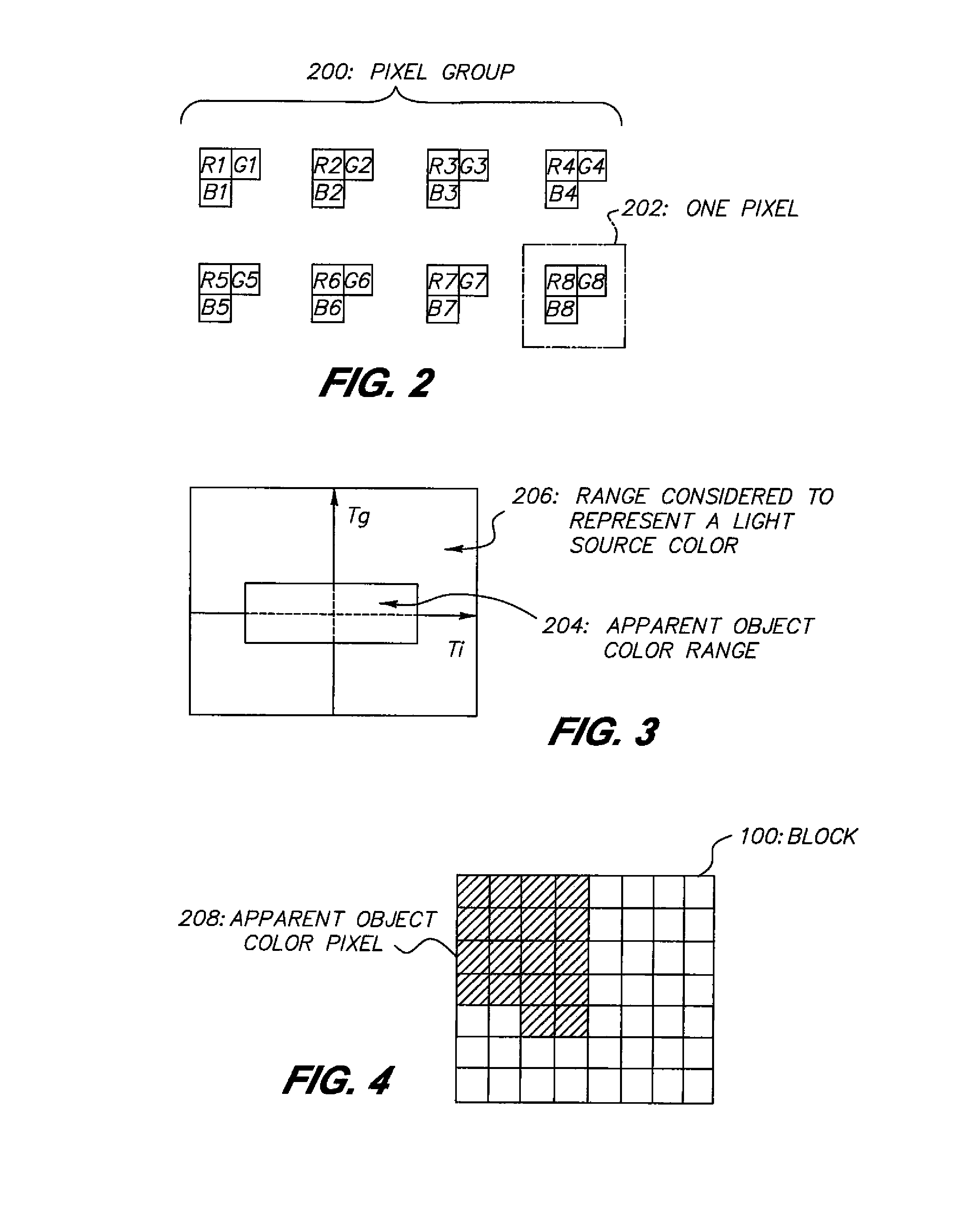White balance adjustment device and color identification device
a technology of white balance adjustment and color identification, which is applied in the direction of color signal processing circuits, instruments, television systems, etc., can solve the problems of insufficient measures, inability to accurately indicate the color, and inability to provide sufficient measures, so as to eliminate the influence of an object color, improve the accuracy of white balance adjustment, and improve the effect of image quality
- Summary
- Abstract
- Description
- Claims
- Application Information
AI Technical Summary
Benefits of technology
Problems solved by technology
Method used
Image
Examples
first embodiment
[0036]FIG. 1 is a block diagram showing the structure of a white balance adjustment device according to the present invention. The white balance adjustment device according to the present embodiment may be incorporated in a digital camera, in the form of an image processing IC having a processor and a memory. In contrast to the structure of the related-art white balance adjustment device shown in FIG. 12, a color range determining circuit 13 is provided prior to the representative value calculating circuit 14.
[0037]The block-dividing circuit 12 divides an image input from the image capture device 10 into a plurality of equal blocks, and sequentially outputs the blocks to the color range determining circuit 13.
[0038]The color range determining circuit 13 determines, from a color difference of each pixel of the n*m pixels constituting each block, whether or not each pixel is of an apparent object color, and distinguishes a pixel of an apparent object color from other pixels. The color...
third embodiment
[0068]Although in the third embodiment the identification accuracy is increased by mapping particular color ranges on a color difference plane, and by determining whether or not the color difference of a cluster belongs to one of these particular color ranges, it should be noted that the identification accuracy depends on the accuracy achieved in mapping each particular color range. For example, the particular color ranges include the skin color range 402 and the leaf color range 404 as shown in FIG. 10. The identification accuracy is improved as the number of particular color ranges is increased, whereas the greater the degree of subdivision of the particular color ranges, the more difficulty is encountered in precisely mapping the particular color ranges.
fourth embodiment
[0069]Therefore, a positional relationship of a subject of a certain particular color range is used to estimate a precise mapping position of another particular color range.
[0070]FIG. 11 schematically shows the process according to the present embodiment. As shown, images of a face of a person are used as a subject for mapping correction. The face images include portions corresponding to the eyes, and portions corresponding to the lips. In this figure, two face images 500 and 502 having different white balance settings are shown as an example. The color differences of a skin color portion and a lip portion of the face image 500 and the color differences of a skin color portion and a lip portion of the face image 502 are respectively different. On the other hand, a skin color range 504 defined by taking into consideration daylight, a fluorescent lamp, and a tungsten light source is mapped on a color difference plane. The color difference of the skin color portion of the face image 5...
PUM
 Login to View More
Login to View More Abstract
Description
Claims
Application Information
 Login to View More
Login to View More - R&D
- Intellectual Property
- Life Sciences
- Materials
- Tech Scout
- Unparalleled Data Quality
- Higher Quality Content
- 60% Fewer Hallucinations
Browse by: Latest US Patents, China's latest patents, Technical Efficacy Thesaurus, Application Domain, Technology Topic, Popular Technical Reports.
© 2025 PatSnap. All rights reserved.Legal|Privacy policy|Modern Slavery Act Transparency Statement|Sitemap|About US| Contact US: help@patsnap.com



